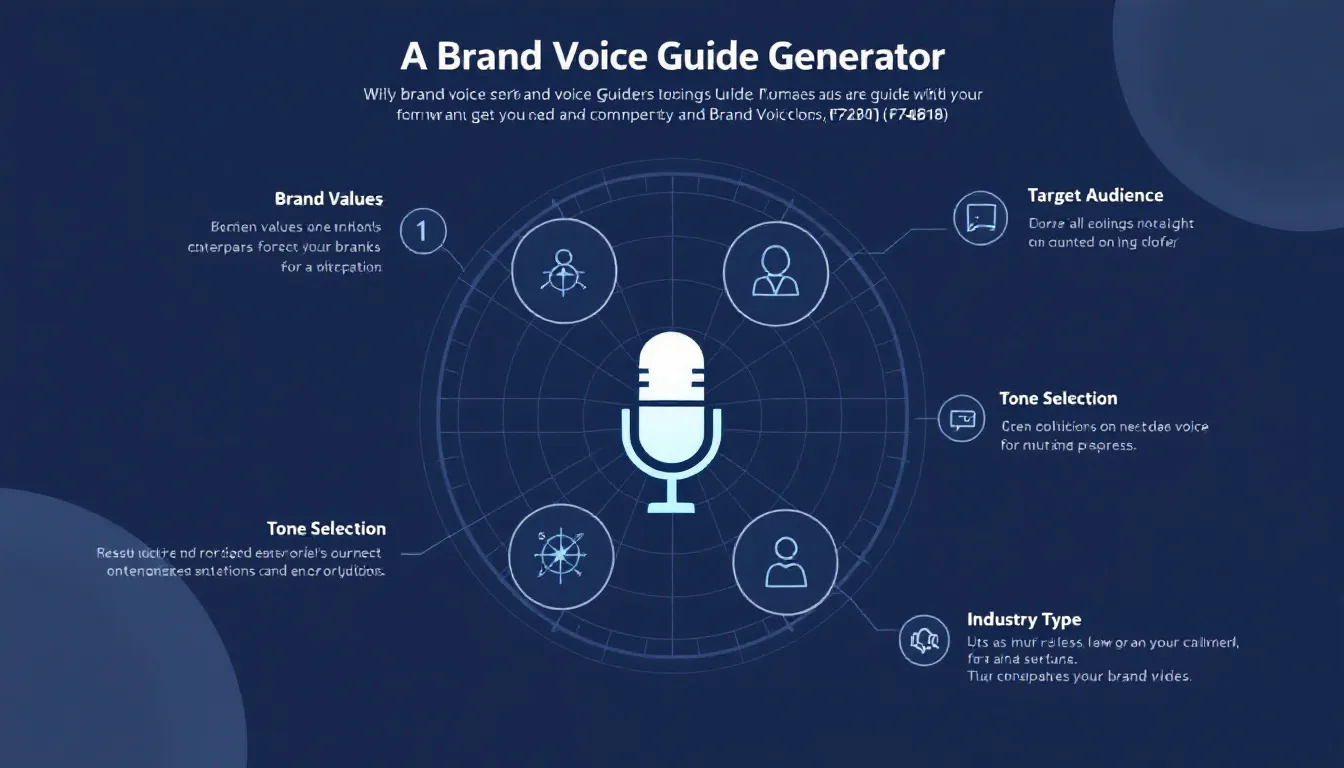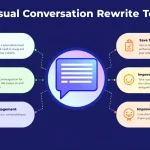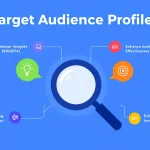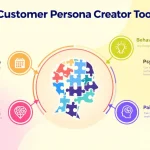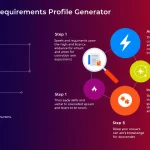Is this tool helpful?
How to Use the Brand Voice and Tone Guide Generator
Using our Brand Voice and Tone Guide Generator is straightforward and intuitive. Simply follow these steps to create a comprehensive brand voice guide tailored to your organization:
- Brand Name: Input your company’s name. For example: “Sustainable Solutions” or “TechVision Dynamics”
- Core Values and Key Messages: List your primary brand values and messages. Consider values like “Environmental stewardship, Community empowerment, Technological advancement”
- Target Audience: Define your ideal customer profile with specific demographics and characteristics
- Communication Style: Specify your preferred tone and style of communication
- Industry Type: Enter your business sector for more contextualized recommendations
Understanding Brand Voice and Tone Guides
A brand voice and tone guide serves as the cornerstone of your company’s communication strategy. It’s a comprehensive document that outlines how your brand should communicate across all channels, ensuring consistency and authenticity in every interaction with your audience.
Key Components of Brand Voice
- Personality traits
- Communication style
- Language preferences
- Tone variations
- Message framework
Benefits of Using the Brand Voice Generator
1. Consistency Across Channels
Maintaining a consistent brand voice across all communication channels helps build brand recognition and trust. Our generator ensures your messaging remains uniform whether you’re crafting:
- Social media posts
- Website content
- Marketing materials
- Customer service responses
- Internal communications
2. Time and Resource Efficiency
Creating a brand voice guide manually can take weeks of research and development. Our generator streamlines this process to minutes while maintaining professional quality standards.
3. Strategic Alignment
The generator helps align your communication strategy with your business objectives by considering:
- Core brand values
- Target audience preferences
- Industry standards
- Market positioning
Practical Applications and Use Cases
Startup Launch Example
Consider a tech startup, “InnovateTech Solutions,” launching a new software platform:
- Brand Name: InnovateTech Solutions
- Core Values: Innovation, Accessibility, User-Centric Design
- Target Audience: Small business owners, age 30-50, tech-aware but not experts
- Communication Style: Professional yet approachable
- Industry: B2B Software Solutions
Retail Brand Evolution
For an established retail brand redefining its market position:
- Brand Name: EcoStyle Essentials
- Core Values: Sustainability, Quality, Ethical Production
- Target Audience: Environmentally conscious consumers, 25-45, urban professionals
- Communication Style: Casual and inspiring
- Industry: Sustainable Retail
Implementing Your Brand Voice Guide
Content Creation Framework
Once you receive your brand voice guide, implement it across various content types:
- Blog posts and articles
- Email campaigns
- Social media content
- Product descriptions
- Customer support scripts
Training and Integration
Share your brand voice guide with:
- Content creators
- Marketing teams
- Customer service representatives
- External agencies
- New employees
Frequently Asked Questions
How often should I update my brand voice guide?
Review and update your brand voice guide annually or when significant changes occur in your business strategy, target audience, or market positioning.
Can I use the same brand voice across different markets?
While core elements should remain consistent, consider adapting tone and style for different cultural contexts and market segments.
How do I maintain consistency across a large team?
Share your guide widely, conduct regular training sessions, and create a review process for content alignment with brand voice guidelines.
Should my brand voice change on different social media platforms?
While the core voice remains consistent, adjust your tone to match each platform’s unique characteristics and user expectations.
How can I measure the effectiveness of my brand voice?
Track engagement metrics, customer feedback, brand recognition scores, and content performance across different channels.
What makes a strong brand voice?
A strong brand voice is authentic, consistent, relatable to your target audience, and aligned with your company’s values and mission.
Making the Most of Your Brand Voice Guide
Regular Review and Updates
Schedule regular reviews of your brand voice guide to ensure it remains:
- Aligned with current business goals
- Relevant to target audience needs
- Competitive in your market space
- Effective across all channels
Content Audit Process
Conduct regular content audits to ensure compliance with your brand voice guidelines:
- Review existing content
- Identify areas for improvement
- Update outdated materials
- Train team members on guidelines
- Monitor content performance
Important Disclaimer
The calculations, results, and content provided by our tools are not guaranteed to be accurate, complete, or reliable. Users are responsible for verifying and interpreting the results. Our content and tools may contain errors, biases, or inconsistencies. We reserve the right to save inputs and outputs from our tools for the purposes of error debugging, bias identification, and performance improvement. External companies providing AI models used in our tools may also save and process data in accordance with their own policies. By using our tools, you consent to this data collection and processing. We reserve the right to limit the usage of our tools based on current usability factors. By using our tools, you acknowledge that you have read, understood, and agreed to this disclaimer. You accept the inherent risks and limitations associated with the use of our tools and services.
